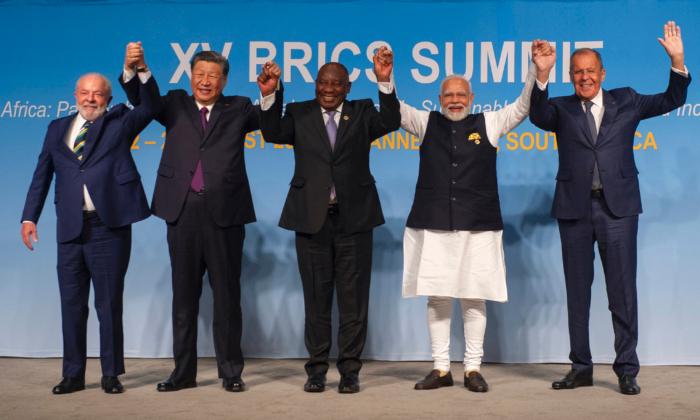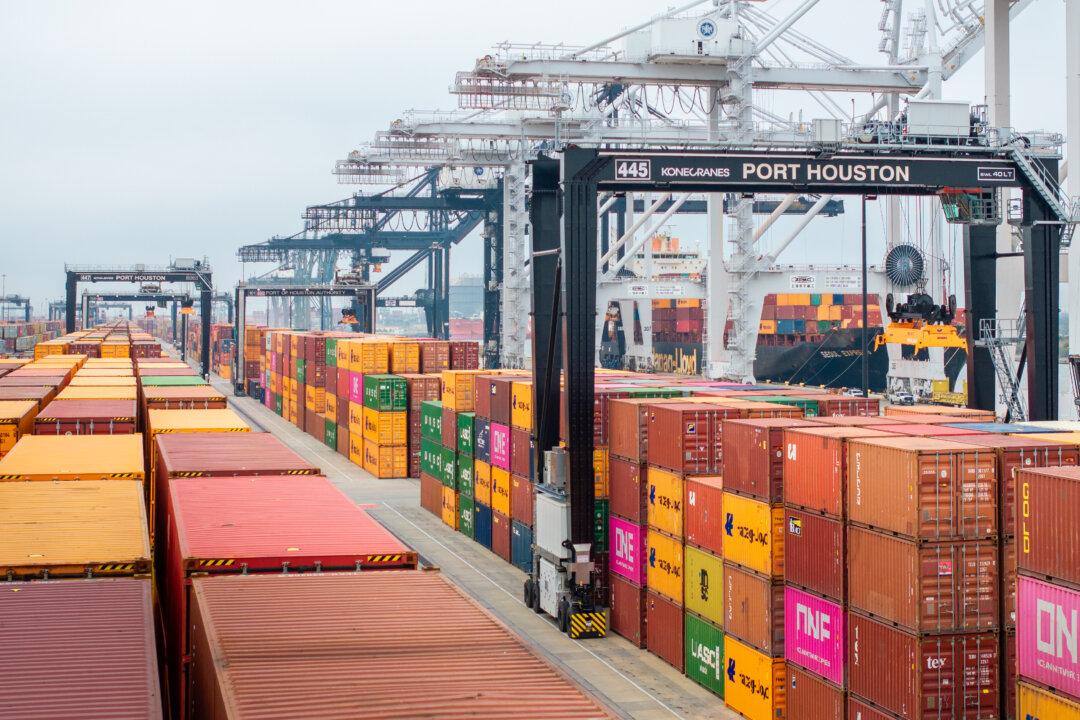As the coalition of emerging market economies better known as BRICS (Brazil, Russia, India, China, and South Africa) has added six more members to the bloc, including Saudi Arabia, the debate in the summit fallout has concentrated on the future of the U.S. dollar as the world’s dominant currency.
But what about global energy markets?
Over the past year, BRICS nations have accelerated their de-dollarization efforts by abandoning the greenback in bilateral trade and settling in local currencies, whether it be the Chinese yuan or the Brazilian real.
At the bloc’s 15th annual summit in Johannesburg, officials confirmed that a working group has been established to assess the creation of a new BRICS reserve currency.
The group plans to rely more on national currencies.
With the buck accounting for most international trade, experts concur that dethroning the U.S. dollar will be a slow process. However, the same sentiment might not be accurate for worldwide crude oil production.
Overnight, BRICS transformed into an energy powerhouse with the addition of three major oil producers.
The organization will also control a vast portion of global oil reserves.
The reformed BRICS is estimated to possess about 700 billion barrels of crude stockpiles, led by Saudi Arabia (297.5 billion barrels), Iran (157.8 billion barrels), Russia (107.8 billion barrels), and the UAE (97.8 billion barrels).
During the summit, South African President Cyril Ramaphosa confirmed that BRICS will be looking at expanding its partnership, which market observers say might include Venezuela.
Should Caracas join the mix, the entity’s control of international oil supplies could top 65 percent.
By comparison, the Group of Seven (G7) economies control about 4 percent of proven reserves.
Geopolitical experts have suggested that BRICS expansion is a big strategic success for China and India, which are the world’s largest oil importers.
New Delhi imports more than 80 percent of its energy needs, while Beijing’s crude imports climbed by 12 percent year-over-year in the first seven months of the year.
Others don’t believe that will seriously alter current conditions in international oil energy markets, especially since many of the new members are a part of OPEC.
“I don’t think this has implications on oil production since the three new members with meaningful oil production are already members of OPEC, which will supersede BRICS in matters of oil output,” Matt Sallee, president of Tortoise Energy Infrastructure Corp., told The Epoch Times.
At the same time, the de-dollarization campaign and the state of energy markets could collide.
Since more countries are engaging in non-dollar bilateral trade, some experts wonder if BRICS nations and BRICS+ allies could eventually request that the United States and Europe settle oil trades in local currencies, such as the UAE dirham or Saudi riyal.
State of US Energy
The U.S. maintains about 44.4 billion barrels in proven oil reserves, excluding the Strategic Petroleum Reserve, which totals more than 300 million barrels.For nearly all of 2023, daily output has been little changed, ranging between 12.2 million and 12.4 million barrels per day (bpd).
On a global basis, proven worldwide oil reserves stand at about 1.65 trillion barrels, and daily output is roughly 100 million bpd.
Indeed, there has been widespread concern that domestic output could be slowing heading into 2024. Despite a barrel of West Texas Intermediate (WTI) trading at about $80, production growth has been flat for most of 2023 and below-trend compared to before the COVID-19 pandemic.
“The U.S. shale industry has been massively successful, roughly doubling the production out of the average oil well over the last decade, but that trend has slowed in recent years,” said Dane Gregoris, report author and managing director at EIR.
“In addition, we’ve observed that declines curves, meaning the rate at which production falls over time, are getting steeper as well density increases. Summed up, the industry’s treadmill is speeding up and this will make production growth more difficult than it was in the past.”
The Energy Information Administration (EIA) warned this month that crude oil and natural gas output from top shale-producing regions is poised to slide in September for the second consecutive month to the lowest levels since May.
Mixed Supply News
Global supply forecasts for the remainder of 2023 have been a mixed bag.
Reports suggest that the Biden administration is drafting a plan to ease sanctions on Venezuela and allow more Western energy firms to operate in the South American country.
Last year, Caracas’s crude production slumped to a 50-year low of roughly 700,000 bpd.
“We forecast global liquid fuels production will increase by 1.4 million barrels per day in 2023. Non-OPEC production increases by 2.1 million bpd in 2023, which is partly offset by a drop in OPEC liquid fuels production,” the EIA stated.
“In 2024, global production increases by 1.7 million bpd, with 1.2 million bpd coming from non-OPEC countries. Non-OPEC production growth in the forecast is led by the United States, Brazil, Canada, Guyana, and Norway.”
WTI prices have endured massive fluctuations in 2023. Year-to-date, U.S. crude futures are relatively flat at about $80 per barrel on the New York Mercantile Exchange.
Brent, the international benchmark for oil prices, has slumped by about 2.5 percent this year to $84.






